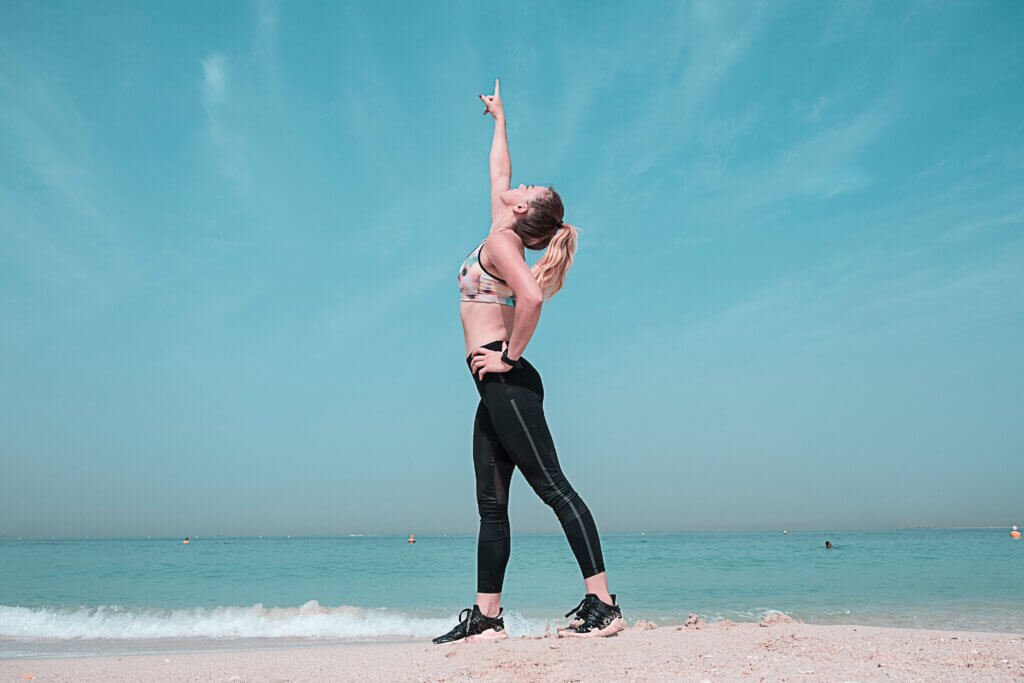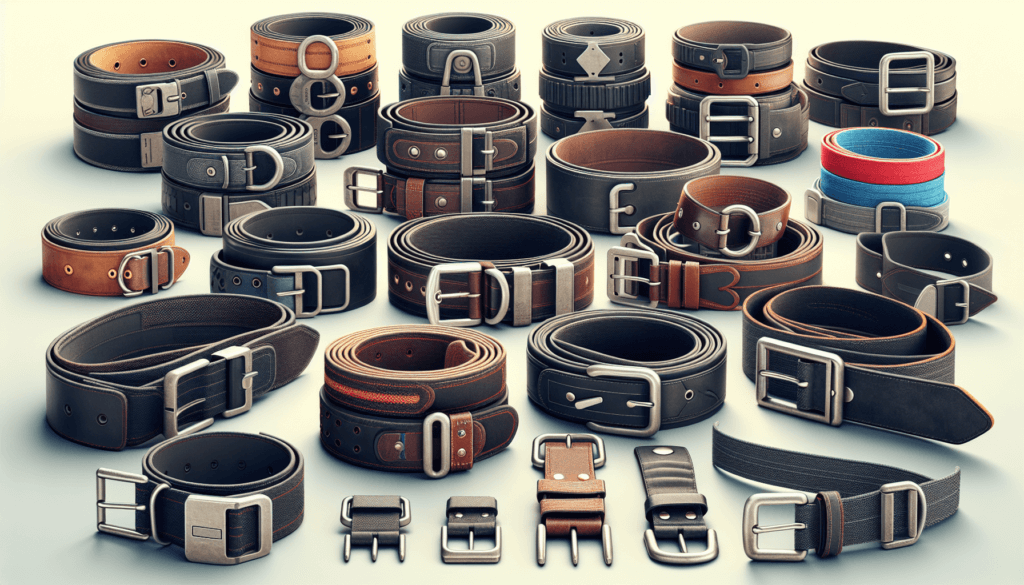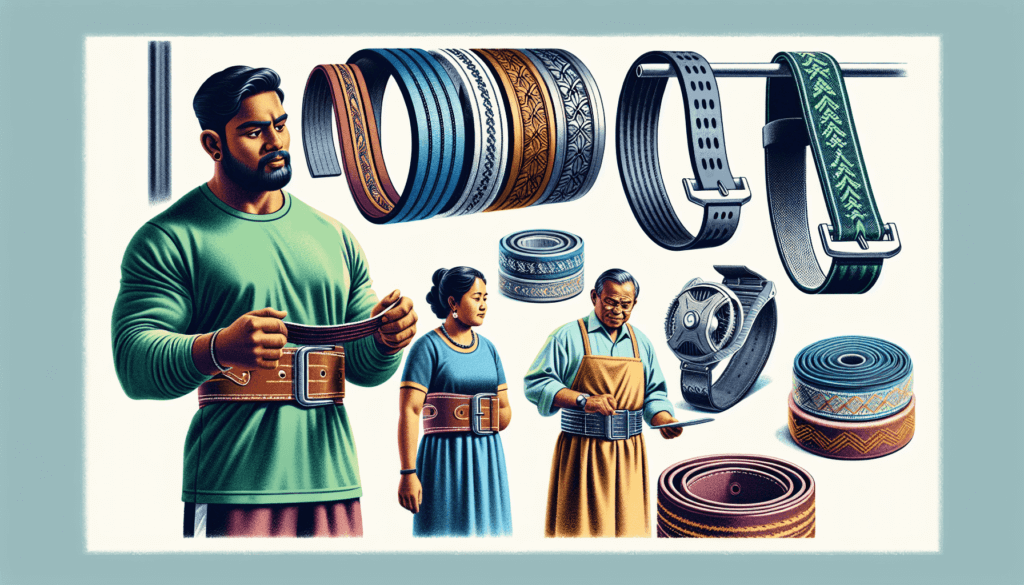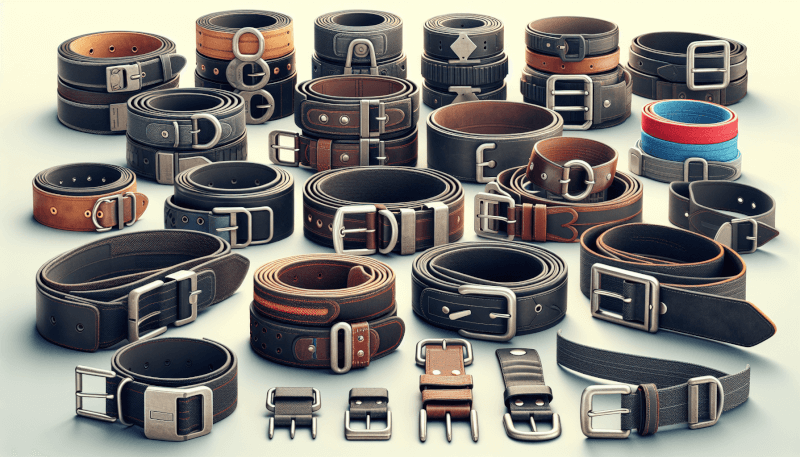Are you tired of constantly struggling with your weightlifting workouts? Do you find it difficult to maintain proper form and protect your lower back? If so, it’s time to consider investing in a weightlifting belt. In this comprehensive guide, we will explore all the factors you need to consider when choosing the best weightlifting belt for your needs. From material and thickness to buckle style and fit, we’ve got you covered. So, whether you’re a seasoned weightlifter or just starting out, this guide will help you make the right choice and take your lifting to the next level.
Understanding the Purpose of a Weightlifting Belt
Weightlifting belts are a valuable tool for anyone engaged in weightlifting activities. They serve several crucial purposes that can greatly enhance your performance and safety during intense workouts. Understanding these purposes is essential in order to make an informed decision when choosing a weightlifting belt.
Supporting the Spine and Core Muscles
One of the primary functions of a weightlifting belt is to provide support to your spine and core muscles. When you engage in heavy lifts, such as squats or deadlifts, your back and core muscles are placed under immense pressure. A weightlifting belt can help stabilize these muscles and prevent excessive movement that could lead to injury. By supporting the spine and core muscles, the belt helps maintain proper form and reduces the risk of straining or damaging these vital areas.
Increasing Intra-Abdominal Pressure
Another important purpose of a weightlifting belt is to increase intra-abdominal pressure. When you lift heavy weights, having a strong and stable core is crucial. The belt helps create a rigid support around your abdomen, allowing you to generate more force and power during your lifts. This increased intra-abdominal pressure not only enhances your overall lifting performance but also protects your lower back by minimizing stress on the spine. By utilizing a weightlifting belt, you can maximize your strength and stability while minimizing the risk of injury.
Different Types of Weightlifting Belts
Weightlifting belts come in various materials and designs, each offering different benefits and features. Understanding the different types of weightlifting belts will help you choose the one that suits your needs and preferences.
Leather Belts
Leather belts are a popular choice among weightlifters due to their durability and stability. These belts are typically made from high-quality leather, providing excellent support to the back and core muscles. Leather belts are known for their rigid construction, offering maximum stability during heavy lifts. They are also highly adjustable, ensuring a snug and comfortable fit. If you prioritize durability and long-lasting performance, a leather belt may be the ideal choice for you.
Nylon Belts
Nylon belts are another common option in the weightlifting community. These belts are made from durable and flexible nylon materials, providing a combination of support and comfort. Nylon belts offer a more lightweight and flexible alternative to leather belts while still providing ample support to the core muscles. They are often adjustable and easy to put on and take off, making them a convenient choice for many weightlifters.
Velcro Belts
Velcro belts are a popular choice for those who prioritize convenience and ease of use. These belts typically feature a velcro fastening system, allowing for quick and simple adjustments. Velcro belts are often made from nylon or other synthetic materials, offering a balance of support and flexibility. While they may not provide the same level of rigidity as leather belts, velcro belts can still offer sufficient support for many weightlifting activities.
Contoured Belts
Contoured belts are designed with ergonomic considerations in mind. These belts are shaped to follow the natural curves of the body, providing a more tailored and comfortable fit. Contoured belts can offer excellent support to the lower back and abdomen, minimizing the risk of injuries. If you prioritize comfort and a close fit, a contoured belt may be the right choice for you.

Considerations When Choosing a Weightlifting Belt
When choosing a weightlifting belt, there are several important considerations to keep in mind to ensure you find the perfect fit and support for your needs.
Belt Width
The width of the belt is an important factor to consider. A wider belt generally provides more support and stability to the core muscles. If you engage in heavy compound lifts, such as squats or deadlifts, a wider belt may be more suitable for you. On the other hand, if you prefer a greater range of motion for exercises like Olympic lifts, a narrower belt may be a better option.
Belt Thickness
The thickness of the belt also plays a role in determining the level of support and rigidity it offers. Thicker belts typically provide more stability and support during heavy lifts. However, they can also feel more restrictive and may hinder your range of motion for certain exercises. Thinner belts are generally more flexible and can be a suitable choice if you prioritize freedom of movement.
Belt Fastening Mechanism
The fastening mechanism of the belt is an important consideration for both convenience and security. Common fastening mechanisms include buckles, velcro, or a combination of both. Buckles provide a secure and adjustable fit but may require more time to put on and take off. Velcro fasteners offer quick and easy adjustments but may not offer the same level of security. Consider your personal preferences and the type of activities you engage in when choosing the fastening mechanism that suits you best.
Belt Size
Ensuring the right size of the weightlifting belt is crucial for proper support and fit. Measure your waist accurately to determine the appropriate belt size. It is important to refer to the manufacturer’s sizing guide to find the right size for your measurements. Remember that a correctly sized belt should provide a snug and supportive fit without being overly tight or uncomfortable.
Belt Adjustability
The adjustability of the belt is another factor to consider. Some belts offer multiple holes or adjustment options, allowing for a more tailored fit. This adjustability is especially valuable if you plan to use the belt for a wide range of workouts or if you anticipate changes in your waist size. Ensure that the belt you choose provides sufficient adjustability to accommodate your needs.
Finding the Right Fit
Finding the right fit for your weightlifting belt is essential to maximize its effectiveness and comfort during your workouts. Here are some tips to help you find the perfect fit:
Taking Accurate Measurements
Before purchasing a weightlifting belt, measure your waist accurately using a tape measure. Measure around the area where you plan to wear the belt, typically just above the hip bones. Refer to the manufacturer’s sizing guide to determine the appropriate size based on your measurements. Taking accurate measurements will help ensure the best fit and support for your needs.
Adjustability Options
Consider the adjustability options of the belt. If the belt offers multiple holes or adjustment options, try to find the setting that provides a snug and supportive fit without feeling overly tight or uncomfortable. Remember that the belt should offer stability and support without restricting your movements.
Trying on Different Belts
If possible, try on different weightlifting belts to determine which one feels the most comfortable and supportive for your body. Pay attention to the width, thickness, and overall fit of the belt. Walk around, perform a few test movements, and simulate the motions you would typically perform during your workouts. This will give you a better idea of how the belt will feel and perform when you’re lifting weights. Finding the right fit may require some trial and error, but it’s worth the effort to ensure optimal support and comfort.

Choosing the Right Material
Weightlifting belts are available in various materials, each offering its own set of advantages and considerations. Understanding the characteristics of different materials will help you choose the best option for your needs.
Leather Belts
Leather belts are known for their durability and stability. They offer excellent support to the back and core muscles, making them a popular choice among serious weightlifters. Leather belts tend to be more rigid and sturdy, providing maximum stability during heavy lifts. Additionally, leather belts often mold to the shape of your body over time, becoming even more comfortable and personalized. If you prioritize durability and long-lasting performance, a leather belt may be the ideal choice for you.
Nylon Belts
Nylon belts are lightweight and flexible, making them a popular choice for those who value comfort and ease of use. These belts offer a combination of support and flexibility, allowing for a wide range of movements. Nylon belts are often adjustable and easy to put on and take off, providing convenient versatility. They are also typically more affordable than leather belts, making them a budget-friendly option for many weightlifters.
Synthetic Materials
In addition to leather and nylon, weightlifting belts can also be made from various synthetic materials. Synthetic belts often offer a balance of support, flexibility, and affordability. They may provide features such as moisture-wicking properties or additional padding for enhanced comfort. If you prioritize specific features or have specific preferences for materials, exploring synthetic options may be worth considering.
Weightlifting Belt Features to Look For
When selecting a weightlifting belt, there are several important features to consider. These features can make a significant difference in the belt’s effectiveness and your overall lifting experience.
Contouring and Supportive Design
Look for a weightlifting belt with a contouring and supportive design. A well-designed belt will provide a snug and comfortable fit, offering support to the lower back and core muscles. A contoured shape can enhance the belt’s ability to mold to your body, ensuring optimal support and stability during your workouts.
Double or Single Prong Buckle
Consider the type of buckle on the belt. Some belts feature a double prong buckle, while others have a single prong. Double prong buckles provide extra security and stability but may take longer to secure. Single prong buckles are easier to fasten and adjust but may not offer the same level of tightness as double prong buckles. Choose the buckle type that aligns with your preferences and needs.
Extra Padding or Cushioning
Extra padding or cushioning can add comfort and support to your weightlifting belt. Some belts feature additional padding in the back or abdominal area, providing extra protection and cushioning during heavy lifts. If you prioritize comfort or have specific needs, such as a history of lower back issues, consider a belt with extra padding or cushioning to enhance your lifting experience.
Additional Attachments or Accessories
Certain weightlifting belts may come with additional attachments or accessories that can enhance their functionality. This may include attachment points for accessories such as dip belts or chains. These additional attachments can add versatility to your workouts and allow for a wider range of exercises. If you engage in specific exercises or require additional features for your training, consider a belt that offers these extra attachments or accessories.

Understanding Belt Thickness and Width
The thickness and width of a weightlifting belt are important factors to consider when choosing the right belt for your needs.
Optimal Thickness for Different Lifts
Thicker belts generally provide more stability and support during heavy lifts. They can help maintain proper form and reduce the risk of injury. Thicker belts are often preferred for lifts such as squats or deadlifts, where a high level of support is desirable. However, it’s important to remember that thicker belts can feel more restrictive and may limit your range of motion for exercises that require more flexibility. Consider the types of lifts you typically perform and find a balance between stability and freedom of movement.
Determining the Right Width
The width of the belt can also impact its performance and comfort. Wider belts generally offer more support to the core muscles, making them suitable for heavy compound lifts. However, if you engage in exercises that require a greater range of motion, such as Olympic lifts or overhead presses, a narrower belt may be a better option. The key is to find a width that provides the support you need while allowing for optimal movement during your workouts.
Budget Considerations
When choosing a weightlifting belt, budget considerations may also come into play. Weightlifting belts vary in price depending on the material, brand, and additional features they offer.
Prices for Different Types of Weightlifting Belts
Leather belts tend to be higher in price due to their durability and superior quality. Nylon belts are generally more affordable, making them a budget-friendly option for many weightlifters. Synthetic belts can fall into a wide range of prices, depending on the specific materials and features included.
Consider your budget and how often you plan to use the belt. If you are a dedicated weightlifter who will be using the belt frequently, investing in a higher-quality belt may be worth it for long-term performance and durability. However, if you are just starting out or have budget constraints, there are plenty of affordable options available that still provide adequate support and functionality.
Longevity and Durability
Keep in mind that while a higher-quality belt may come with a higher upfront cost, it is likely to be more durable and longer-lasting. Investing in a durable weightlifting belt can save you money in the long run by eliminating the need for frequent replacements. Consider the quality and durability of the belt when comparing prices, and choose a belt that aligns with your budget and long-term goals.

Reviews and Recommendations
Reading reviews and seeking recommendations from experts or experienced weightlifters can provide valuable insights and help you make a well-informed decision.
Researching and Reading Reviews
Take the time to research different brands and models of weightlifting belts. Look for reputable sources such as fitness websites, forums, and online retailers that feature customer reviews. Reading reviews can give you a better understanding of the pros and cons of different belts, as well as the experiences of other weightlifters. Pay attention to factors such as comfort, durability, fit, and overall satisfaction levels mentioned in the reviews. Gathering information from a variety of sources will help you form an accurate and well-rounded opinion.
Seeking Recommendations from Experts or Experienced Weightlifters
If you have access to experts or experienced weightlifters, it can be helpful to seek their recommendations. They can provide insights based on their knowledge and experience, guiding you towards reputable brands and models. Seeking recommendations can also give you the opportunity to ask questions and receive personalized advice based on your specific needs. Tap into the weightlifting community, whether in person or online, to gather valuable recommendations and insights.
Conclusion
Choosing the best weightlifting belt for your needs is crucial to maximize your performance and protect your body during intense workouts. By understanding the purpose of a weightlifting belt and considering factors such as material, fit, and features, you can make an informed decision. Remember to prioritize support, comfort, and durability when selecting a weightlifting belt. Take advantage of resources such as reviews and recommendations to gather as much information as possible. Finding the perfect weightlifting belt will contribute to a safer and more effective weightlifting experience, helping you reach your fitness goals with confidence.



